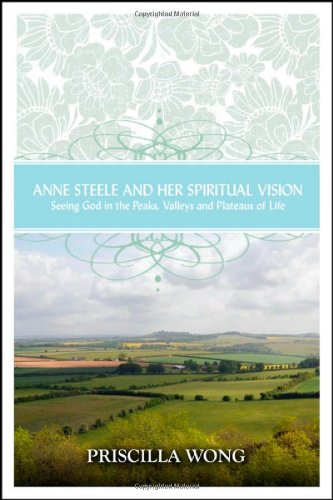Reviewed by Ian Hugh Clary
In that other justly famous Table Talk, Samuel Taylor Coleridge once said: “Prose = words in their best order; poetry = the best words in the best order.” It is thus fitting that praises to God often take poetic form, whether in the Psalms, hymnody, or poetry itself. To effect that fitting end, God gives the church poets who help us return to him those “best” words. Some are familiar to us, like Donne, Herbert, Cowper, or Taylor. Yet there are many in times past, as in our own day, who compose in obscurity. There are still others who were widely read in their day, only to fade into the mists of time today. Such is the fate of the Baptist poetess and hymn-writer Anne Steele (1717-1778).
Thankfully, the church is experiencing the beginning of a renaissance of Steele’s works. While a number of detailed studies of Steele have recently been published — one thinks of Cynthia Aalders’ To Express the Eneffable, or the work of Julia Griffin, not to mention J. R. Broome’s large biography — Priscilla Wong has done the important work of synthesizing these studies to give a fresh, thoughtful, and broadly accessible analysis of her poetry. In a culture that is reared on the nonsense of Dan Brown novels, or Fifty Shades of Grey, poetry is like an unbreakable code. Not only has poetry been relegated to the periphery of modern education, but when the form is manifested in pop culture, it is gibberish like Justin Beiber’s “Baby, Baby, Baby” that gets the widest hearing. Wong’s Anne Steele and her Spiritual Vision is a welcome corrective.
The book, the fruit of Wong’s graduate thesis at Toronto Baptist Seminary, written under the careful eye of Michael Haykin, does a great job at setting Steele in her historical and cultural context. Like so many poets in her day, Steele stood in the cross-currents of evangelicalism, the Enlightenment, and Romanticism. While not over-burdening the reader, this context is well-established in the introduction, and throughout the other four chapters. Wong — following a kind of redemptive-historical trajectory — traces three themes in Steele’s poetry: God’s glory in creation; faith and suffering; and the promised glory of heaven. All the while Wong is careful to show how Steele encountered God personally in each theme. In her conclusion, she brings together all that she has encountered in Steele’s experiences and applies them for the reader, making the book a “usable past” for spiritual growth. This emphasis on spirituality is a fitting capstone not only to the book, but to the life of Steele, whose poetry and prose is grounded in her communion with God.
Due to her background in literature and theology, Wong proves to be a faithful guide both in terms of the literary form of poetry and the content of the poems. Wong pays careful attention to the use of words, grammar and imagery. She also sets the chapter themes in a discussion with the Baptist theologian John Gill (1697-1771), Steele’s contemporary. Wong not only gives a good handling of primary sources, but is well familiar with secondary material dealing with the history, theology, and literature of this period. She effectively gets into the mind of the writer, using the poems, as well as Steele’s personal circumstances, that helps capture the essence of each poem. All of this makes for satisfying reading. Anne Steele is an enchiridion of sorts for a deeper read of Steele’s corpus.
While there is a regular attempt to bring classic hymnody back into the church — though we have more work to do with the Psalter, and yes, it would be nice to sing more hymns by Steele — poetry needs a comeback. Maybe a rediscovery of Anne Steele will be a good first step? If so, then surely Priscilla Wong’s book will play an important part.
Ian Clary is Review Editor for Apologetics here at Books At a Glance.
